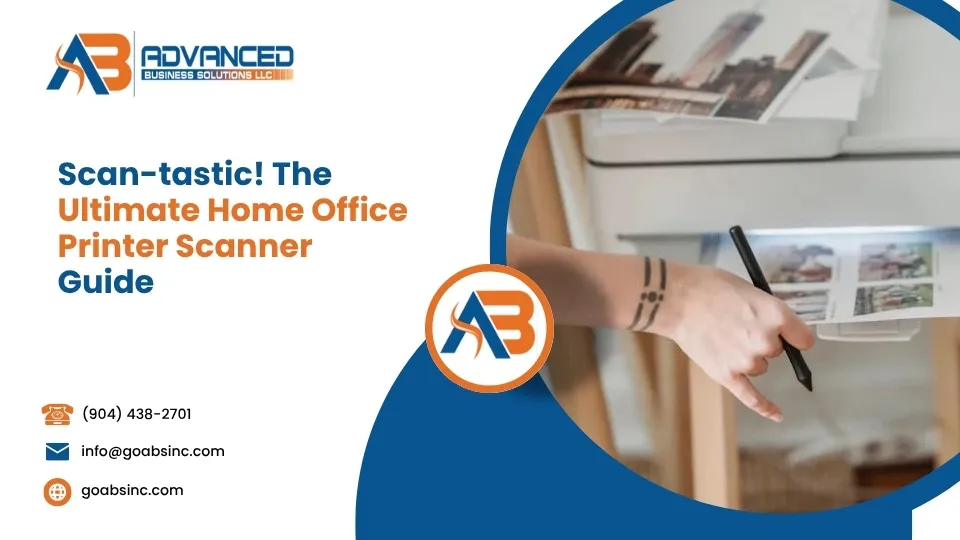Creating a document management system ppt helps organizations visualize their path from paper chaos to digital efficiency. Here’s what you need to know:
Key Elements for Your DMS Presentation:
- Problem statement showing current document challenges
- Visual workflow diagrams explaining DMS processes
- ROI calculations with time and cost savings
- Security and compliance benefits overview
- Implementation timeline and next steps
Professionals lose significant time to document-related issues, with the average document getting copied around 20 times within an organization. Physical documents decay, storage space costs money, and manual processes slow everything down.
Presenting a document management system solution through PowerPoint helps teams understand the change ahead. Your presentation becomes the bridge between current frustrations and future efficiency gains.
The document management system market is growing at 14.07% annually, reaching an estimated $12.50 billion by 2027. This growth reflects organizations’ urgent need to digitize their operations and streamline workflows.
A well-crafted DMS presentation shows stakeholders exactly how electronic document management will reduce costs, improve collaboration, and ensure compliance with regulations like HIPAA and SOX.
Setting the Stage
Document chaos costs organizations real money. When we work with clients across Florida, from Jacksonville to Orlando, we see the same patterns: filing cabinets overflowing, emails with multiple document versions, and teams struggling to find information quickly.
The efficiency goals are clear: reduce time spent searching for documents, eliminate version confusion, improve collaboration, and ensure compliance with industry regulations. A document management system addresses all these challenges, but explaining the solution requires a compelling presentation that resonates with stakeholders.
Understanding Document Management Systems
Document management systems transform the chaos of paper filing and scattered digital files into an organized, searchable, and secure information hub.
Document management systems handle the complete lifecycle of your information. From the moment someone scans a receipt or creates a new proposal, the system captures, indexes, stores, and makes it instantly available to authorized users.
Optical Character Recognition (OCR) technology reads text inside scanned documents and makes every word searchable. Version control solves the “which version is current?” problem by managing document check-in and check-out processes.
Our friends at Document Management Systems Explained dive deeper into the technical details.
Compliance features work behind the scenes to keep your organization compliant with HIPAA, SOX, and other regulations. Cloud access means your team can access documents from anywhere.
What Is a Document Management System?
A Document Management System serves as your office’s digital brain – it knows where everything is, who last accessed it, and can retrieve any document instantly.
The document lifecycle follows capture, indexing, secure storage, retrieval, collaboration, and finally archival or destruction according to your policies.
An electronic repository serves as your organization’s memory bank, allowing multiple simultaneous access while maintaining automatic backups.
Why Organizations Need a DMS
Research shows that 56% of organizations can’t confidently say their email documentation is properly stored and findable. Additionally, 41% question whether their electronic information is accurate, while 38% of knowledge workers deal with version confusion daily.
Cost savings add up quickly through reduced physical storage needs and improved productivity. Space recovery represents one of the most tangible benefits – a single server can store what would fill warehouse-sized rooms of paper documents.
Core Features & Functionalities
Search capabilities powered by OCR enable full-text search of any document content. Audit trails provide complete accountability by logging every document access and modification. Check-in and check-out functionality prevents version conflicts, while encryption protects documents during storage and transmission.
Types of DMS: Cloud, On-Premise, Hybrid
Cloud-based DMS solutions offer the fastest deployment with lowest upfront investment. On-premise deployments provide complete control over data and infrastructure. Hybrid approaches combine both benefits, keeping critical documents on-premise while using cloud services for accessibility.
How DMS Boosts Workflow & Productivity
Automation transforms manual processes into efficient workflows. Visual workflows make complex processes easy to follow. Collaboration improvements become immediately noticeable as teams can work on related documents without conflicts.
Security, Compliance & Data Protection
Role-based access control ensures appropriate document access. HIPAA and SOX compliance features handle regulatory requirements automatically. Disaster recovery capabilities protect against data loss, while data encryption provides enterprise-grade security.
Document Management System PPT: Slide-by-Slide Guide
Building a compelling document management system ppt means telling a story your audience wants to hear. You’re showing people how to escape daily frustration of lost files and endless searching.
Your presentation needs to take people on a journey from “we have a problem” to “here’s the solution” to “let’s make this happen.” Each slide should feel like a natural next step, not random bullet points.
Balance technical details with real business benefits. People need to understand how the system works, but they really want to know how it will improve their workday. Smart visuals make this connection – screenshots showing actual workflows, diagrams clarifying complex processes, and charts proving return on investment.
Must-Have Slides for a document management system ppt
Your agenda slide should feel like a roadmap. Let people know you’ll spend 10 minutes on current problems, 15 minutes showing how a DMS solves them, and 10 minutes on next steps.
The problem statement slide hits home when it reflects actual daily experience. Instead of generic statistics, reference specific situations everyone recognizes, then add supporting research.
A feature wheel gives people the big picture without overwhelming details. Group DMS capabilities into logical chunks like security features, collaboration tools, and compliance support.
Your ROI chart needs to balance exciting with believable. Show obvious savings like reduced storage costs plus harder-to-measure benefits like improved customer service. Always include assumptions so people understand your calculations.
Visual Assets & Infographics That Engage
Icons become your visual vocabulary throughout the presentation. Pick consistent symbols and stick with them. Process diagrams work beautifully for showing change from chaos to order. Screenshots prove your point better than descriptions, but choose screens showing exactly what your audience will be doing.
Tips to Present DMS ROI & Metrics
Time saved calculations need to feel achievable. If your team spends 30 minutes daily looking for files, and a DMS cuts that to 5 minutes, you’ve saved 25 minutes per person daily. Multiply by team size and hourly wage for annual dollar impact.
Cost avoidance numbers often impress executives more than direct savings. Include storage space you won’t need to rent and documents you won’t need to recreate.
Downloadable Templates and Resources
Editable presentation layouts save formatting time while maintaining professional appearance. Organizations with tight budgets might explore Open Source Document Management System options.
Supporting materials demonstrate thorough preparation. Create resource libraries with case studies, implementation checklists, vendor comparisons, and sample policies.
Choosing & Deploying a DMS
Selecting the right document management system requires finding one that fits your specific needs, budget, and technical environment. Your document management system ppt should include clear vendor comparison to build stakeholder confidence.
Start with honest self-assessment: How many documents do you manage? How many users need access? What systems must integrate? These questions shape your selection process.
User adoption makes or breaks every DMS implementation. Smart organizations plan for change management from day one.
Secure Document Management Solutions become critical as data breaches make headlines and regulatory requirements tighten.
Selection Criteria & Vendor Checklist
Scalability tops considerations that organizations often underestimate. Your current 15-person team might grow to 50 within two years. Can your chosen system handle that growth?
Support quality varies wildly across vendors. Ask for customer references and actually call them. Find out what happens when things go wrong.
Pricing transparency protects you from unpleasant surprises. Initial license cost represents just the beginning – training, migration, customization, and ongoing support add significant expenses.
Deployment Models: Cloud vs On-Premise vs Hybrid
| Factor | Cloud | On-Premise | Hybrid |
|---|---|---|---|
| Initial Cost | Low | High | Medium |
| Ongoing Maintenance | Vendor Managed | Customer Managed | Split Responsibility |
| Customization | Limited | Extensive | Moderate |
| Scalability | Instant | Planned Upgrades | Flexible |
Cloud deployments get you running faster with vendor-managed servers, backups, and maintenance. On-premise installations give complete control over data and configuration. Hybrid approaches keep sensitive documents on your servers while using cloud services for everything else.
Integration with Existing Tools
Office 365 integration makes or breaks user adoption. When people can save documents to your DMS directly from Word or Excel, they’ll actually do it.
CRM and ERP integration eliminates double-entry work. Single sign-on capabilities remove friction from daily workflows.
Overcoming Implementation Challenges
Change management starts with honest communication about what’s changing and why. Data migration always takes longer than expected. Training programs work best when focused on specific job functions rather than generic system features.
ROI & Future Trends
When putting together your document management system ppt, the ROI section often gets the most executive attention. They want to know exactly how this investment will pay off.
Modern DMS analytics tell fascinating stories about how your organization works. You’ll find which documents get accessed most frequently, where workflow bottlenecks occur, and which team members need extra training.
AI-powered tagging has become a game-changer. Instead of manual categorization, machine learning algorithms analyze content and automatically apply appropriate tags and routing rules.
Mobile capture turns every smartphone into a professional document scanner. Field technicians can photograph work orders and have them instantly digitized and routed to the right department.
The sustainability angle resonates strongly with Florida businesses. Digital document management dramatically cuts paper consumption, reduces printing costs, and frees up physical storage space.
Our Guide to Digital Document Management Systems covers these emerging trends in detail.
Calculating the ROI of Your DMS
Hard savings include concrete cost reductions like decreased printing expenses, eliminated storage rental, and fewer hours spent hunting for documents. We’ve seen clients save thousands annually by reducing commercial printing volume by 60%.
Soft savings can be even more valuable. Better document access means faster customer service, leading to happier clients and potentially more referrals.
Most organizations see payback periods between 12 and 18 months, with benefits accelerating as users become more comfortable with the system.
Emerging Trends: AI, Automation & Beyond
Machine learning keeps getting smarter about understanding document content. Natural language processing can read contracts and automatically flag important dates, payment terms, or renewal clauses.
Intelligent capture goes beyond basic scanning. Modern systems can examine invoices and automatically extract vendor names, amounts, due dates, and purchase order numbers, then route for approval.
Voice commands are making document retrieval more natural. Users can simply ask “Show me all contracts with Johnson Construction from this year” and get instant results.
Case Studies & Success Metrics
Invoice workflow automation typically delivers dramatic improvements. Processing times drop from several days to just hours, while accuracy increases and audit trails become automatic.
Contract management becomes more proactive when everything’s digitized and searchable. Legal departments can quickly research precedents and track renewal dates automatically.
Audit readiness transforms from stressful scramble into routine process. When documents are properly classified and retained, auditors can access what they need without disrupting daily operations.
Frequently Asked Questions about Document Management Systems
When organizations explore document management solutions, they naturally have questions about what to expect. We’ve helped businesses across Florida steer these decisions, and certain questions come up repeatedly in our document management system ppt presentations.
How long does it take to deploy a typical mid-size DMS?
Most mid-size organizations should plan for three to six months from initial planning through full user adoption. This includes system configuration, data migration, user training, and inevitable adjustments.
The complexity of your current document situation heavily influences this timeline. Organizations with well-organized filing systems typically move faster than those dealing with decades of accumulated paper chaos.
Phased rollout approaches often work better than big-bang implementations. Start with one department, get that working smoothly, then expand to other areas.
Can a DMS integrate with legacy software?
Modern document management systems are designed to integrate with other software, even older systems. APIs, web services, and standard protocols make most connections possible.
Your existing accounting software, CRM system, and even custom databases can probably connect to a modern DMS. The question isn’t usually whether integration is possible, but how much effort and cost it requires.
Many popular business applications have ready-made connectors that work right out of the box. QuickBooks, Salesforce, and Microsoft Office integrations are common and straightforward to implement.
What metrics prove DMS success?
Document retrieval time provides the most immediate proof that your system is working. When someone can find a contract in 10 seconds instead of 10 minutes, everyone notices.
Search times typically drop from several minutes to just seconds, creating immediate quality-of-life improvement for users.
Error reduction in document processes shows longer-term value. Fewer version conflicts, reduced data entry mistakes, and better compliance with approval workflows contribute to smoother operations.
User adoption rates tell the real story about system success. High adoption means people find genuine value in the new system.
Other meaningful metrics include faster invoice processing, improved audit readiness, and reduced printing costs. The key is measuring what matters to your specific organization.
Conclusion
Your journey toward document management system ppt success doesn’t end with the final slide – it begins there. The presentation is your first step toward changing how your organization handles its most valuable asset: information.
Future-proof information management means choosing systems that grow with your business. Technology changes quickly, but the fundamentals remain constant: people need to find documents fast, collaborate effectively, and stay compliant with regulations.
The single-source-of-truth concept eliminates frustrating moments when nobody knows which version is current. When everyone accesses the same repository, confusion disappears and productivity soars.
We’ve worked with hundreds of Florida businesses – from small practices in Gainesville to large corporations in Tampa – and the story is always similar. Organizations struggle with document chaos until they implement the right system with proper support.
Success comes from understanding your specific needs, choosing the right solution, and supporting your team through the transition. Your document management system ppt should tell a compelling story about moving from current frustrations to future efficiency.
Whether you’re just starting to explore document management or ready to move forward with implementation, this decision affects everyone in your organization. Choose partners who understand both the technology and the human side of change management.
For comprehensive guidance on selecting and implementing the right solution for your needs, visit our Document Management Solutions page. We’re here to help you write the next chapter of your organization’s productivity story.













Comments are closed